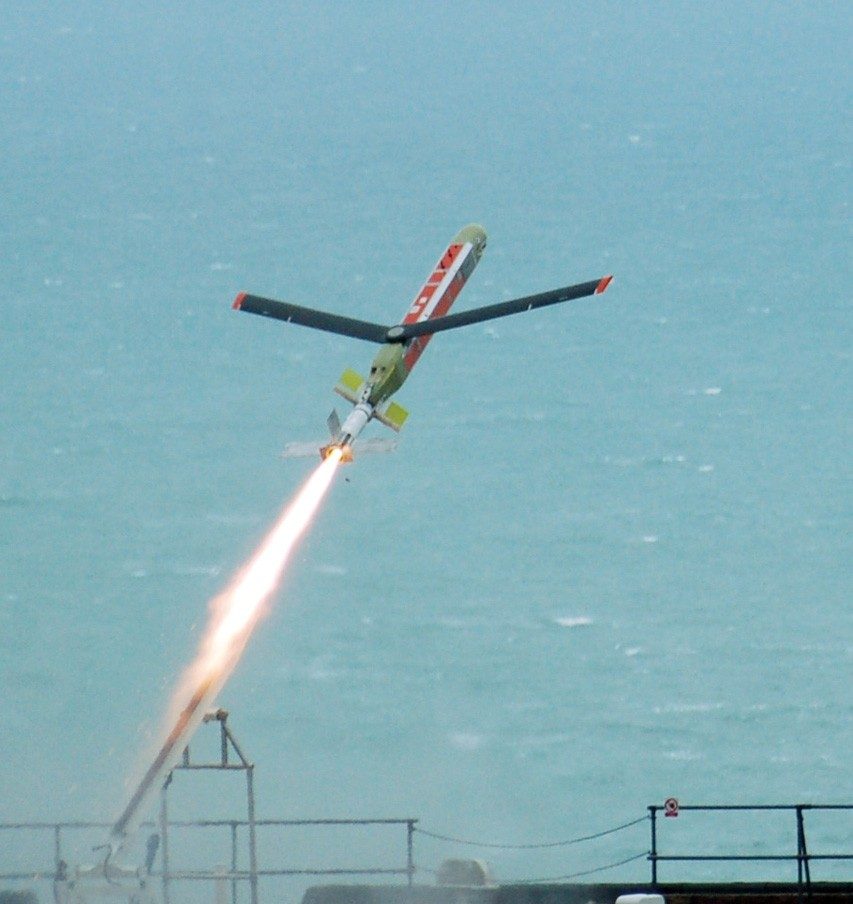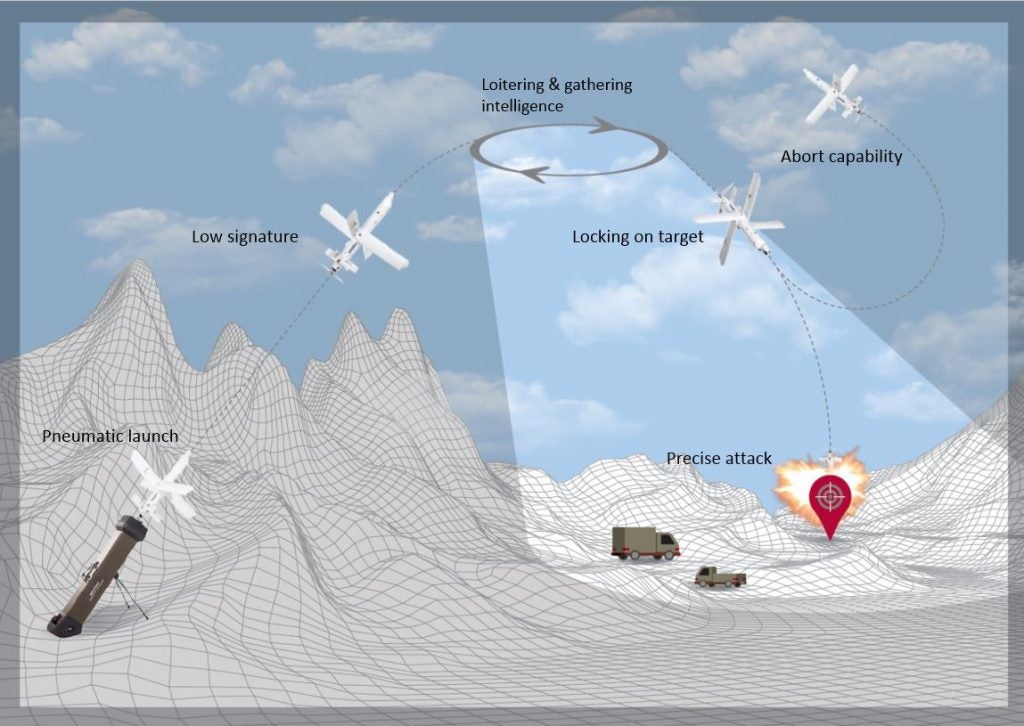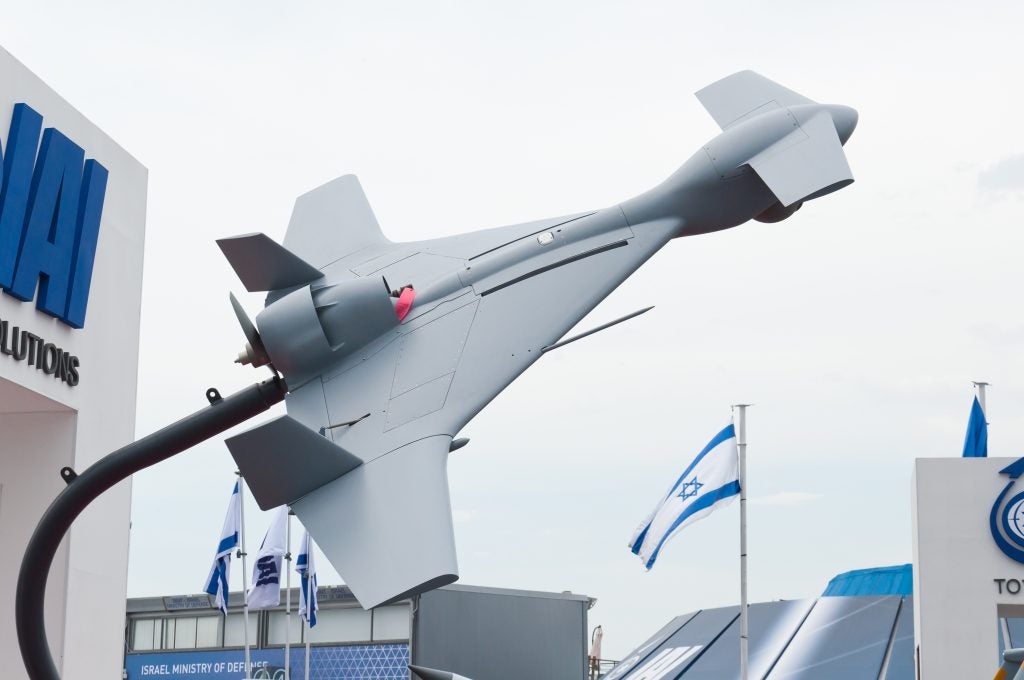In Profile: Loitering Munitions
Loitering munitions go by many names. Whether they are labeled suicide drones, kamikaze drones, or lethal miniature aerial munitions, they are a very real and evolving capability and threat on the world’s battlefields. The munitions range drastically in size, from those small enough to be launched from a 40mm grenade launcher tube to vehicle launched options weighing over 200 pounds. Warheads range from just large enough to kill a single man with a direct or near hit to ten pound dual-charge anti-tank warheads. The market it large and growing, and options are available to meet nearly any tactical need. Despite their growing ubiquity, loitering munitions see a bare fraction of the press of more conventional armed drones, such as the MQ-9 Reaper.
Israel, with its highly limiting combat environments, is unsurprisingly the world leader in the development and deployment of loitering munitions. The small country has great need for lethal, man-in-the-loop systems, usable in the highly populated cities of the Gaza strip. This has led to not only a large stable of weapons capable of extended flight time before strike, but also shorter life-span weapons like the Spike-NLOS missile. The current crop of suicide drones however, draws a direct lineage from Israeli drones, first used in the Bekkaa Valley engagement, to provoke Syrian surface-to-air missile batteries into turning on. By radiating, the batteries made themselves vulnerable to air-launched anti-radiation missiles, fired from fast jets.

Since then, the concept has expanded markedly. Examples now range from the 200+ kilogram Fireshadow (developed and built by MBDA) and WS 43 (developed by China’s CASC), to the 2.5kg Switchblade, now in very limited service with US special forces. Most models incorporate some kind of electro-optical or infrared seeker, while larger models frequently include GPS/INS navigation as well.
The loitering munition market is increasing rapidly, as various countries take notice of the tactical flexibility offered by the weapons. The combined ISR/strike capability integral to most loitering munitions gives operators on the ground the stand-off distance to stay out of the line of fire, and the ability to prioritize their targets. Combined with increasing affordability—some models costing significantly less than $100k per round—the drones offer an attractive alternative to historic fire support options. The ability to carry the drones one the soldier’s back or in the truck or other light vehicle the troops are using, increases the range of the foot soldier’s organic fire support capability. This is an understandably attractive option for commanders.
Loitering munitions also offer another advantage over conventional ISR/strike UAVs; they are much more difficult to detect on the battlefield. While the US and its allies have lost Predator, Reaper, and other drones to enemy fire, many models of suicide drone are too small to be engaged by traditional anti-aircraft methods. Battery powered drones lack the thermal signature to be shot down by MANPADS, and are often too small and fast to effectively neutralize with small arms fire. Their low audio signature also means that enemy troops will not know that the drone is in the area until it is too late.

The final attractive feature of these weapons is the ability to deploy them in ways that were historically impossible for aerial vehicles of any kind. Networked loitering munitions may be able to independently identify, target, and engage opponents in large numbers, or ‘swarms’ in the near future. The light weight of each individual munition means special forces may conduct deep penetration strikes with increased chances of survival. This relative increase in firepower for comparatively minimal weight is highly valuable to those forces that are required to move frequently and quickly to ensure their survival.
Future sales and development of loitering munitions are guaranteed, and it will not be long before the threat from them becomes more widespread and well publicized. Already, they have seen significant combat use, though they remain overshadowed by the high-flying surveillance and strike platforms, hanging over parts of Pakistan, Yemen, and Africa for hours at a time and killing without warning. It cannot be long however, before an enterprising actor makes a similar splash with a lightweight, affordable, suicide drone.

